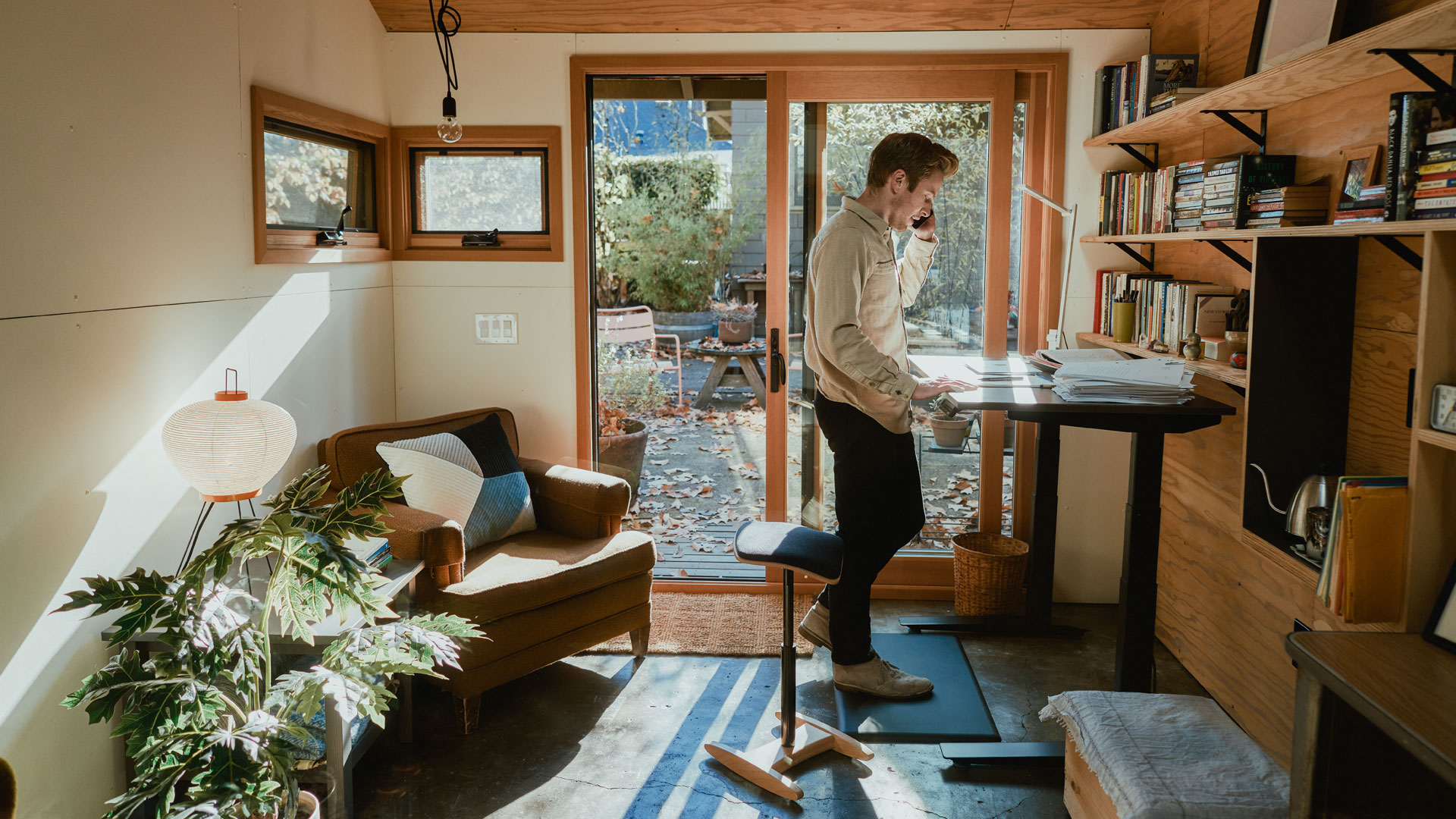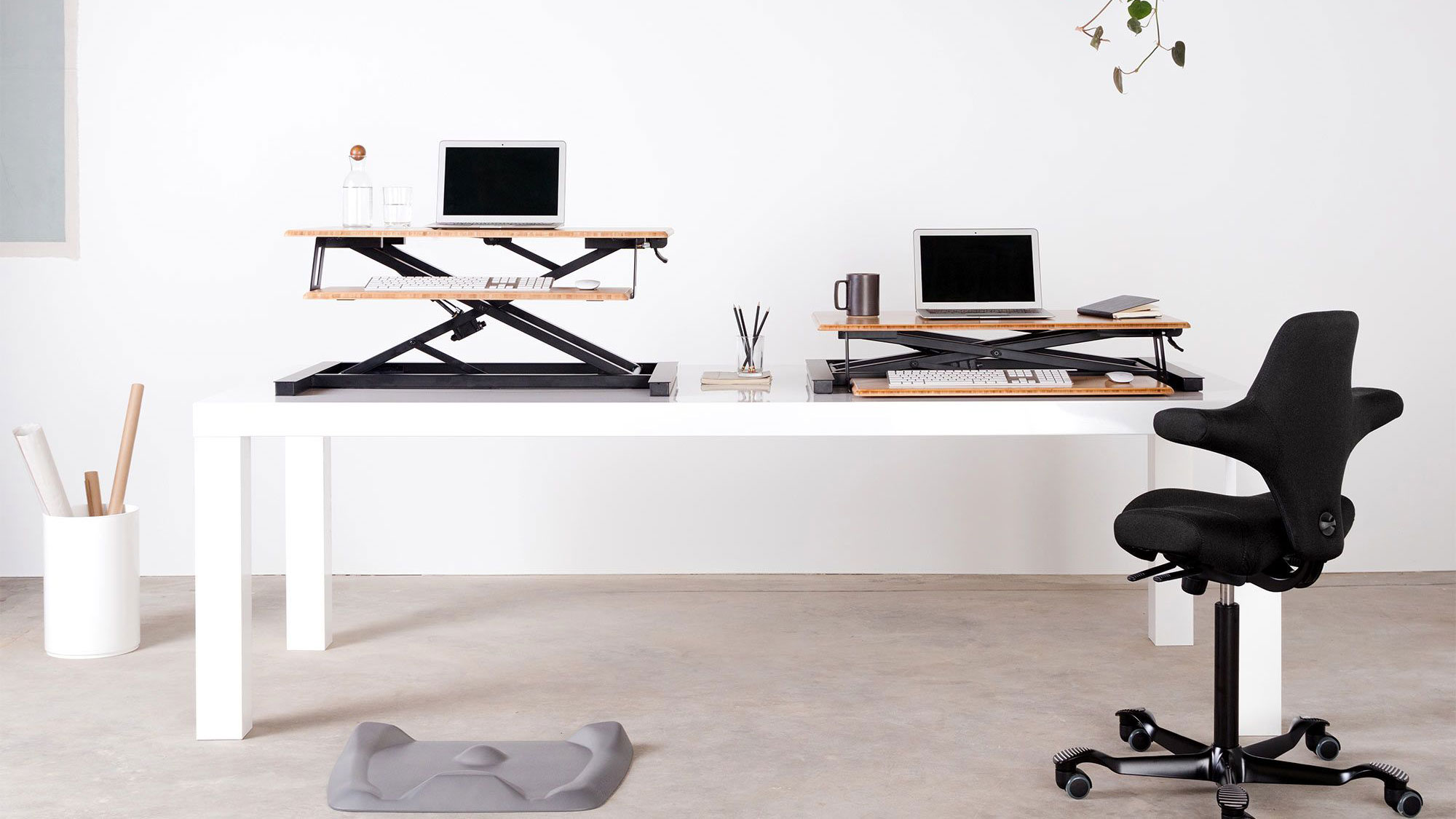Fully home office equipment review: time to upgrade your WFH setup?
With offices closed for the foreseeable future, and some form of working from home here to stay, it’s time to invest in home office furniture


Since the start of the pandemic, most of us have been improvising with our home office set-up. But dining tables and sofas were not designed for office work, leading to poor posture, muscle strains, and even long-term injury. So, to look after our bodies (as well as our careers) we need to invest in home office furniture.
The main issue with domestic furniture is height: laptops force us to hunch our shoulders, and dining tables are often lower than desks, making us slump over. We should ideally have our screens at eye-level, and our keyboards at the height of our belly-buttons.
The best standing desks can improve concentration and posture, but we fatigue quickly, and standing in a poor position can be as bad for your body as sitting. The best solution is an “active workspace” that encourages regular movement and makes it easy to move between standing and sitting in one of the best office chairs.
I tested out various desks, desk converters and seats from the “human-centred office furniture company” Fully, in combination with my normal computer setup, of a laptop, Base 12 Graviton portable stand (£25), Logitech K380 Bluetooth keyboard (£40) and Logitech Pebble M350 mouse (£20). At the same time, I worked with an Egoscue postural specialist to figure out the optimal workspace for me.
- 8 desk exercises to improve posture
- How to quickly set up a home office: top tips for sorting your workspace
The best home office equipment: desks

The Cooper Standing Desk Converter (£315) turns any flat surface (such as a dining table) into a standing desk. It comes fully assembled, is easy to use, and feels stable. The bamboo-and-black-metal design looks smart, simple to adjust and, unlike some desk converters, it doesn’t spring outwards as you raise it, so it is great for small spaces.
The surface was large and stable, but the keyboard shelf was too small and the wrong height, so I turned the whole thing around, ignored the shelf, and put my laptop on a stand to get my screen at eye level. The Cooper was too tall to be used whilst sitting, so switching between positions was a faff, and it’s size and weight made it awkward to move. It only really functioned as a fixed standing desk.
After a few months testing the Cooper, I was sold on the standing desk concept, but wanted to easily switch to sitting when necessary. I was also fed-up with moving everything off the dining table each evening, so I set aside some space for a permanent home-office.
Get all the latest news, reviews, deals and buying guides on gorgeous tech, home and active products from the T3 experts

I purchased Fully’s signature standing desk, the Jarvis, and went for the bamboo-surface motorised version (£539) with the programmable memory handset (+£30) and extended height range (+£20). Dual laptop and monitor arms (+£155) stopped the desk feeling crowded, and kept my screens at eye-level, with my keyboard at the right height.
The Jarvis has been absolutely fantastic, and there is nothing about it that I could improve. The combination of programmable height adjustment and monitor arms gave me complete flexibility. The extended height range was probably unnecessary, but it helped with Egoscue sessions over Zoom.
The best home office equipment: mats

When standing, a mat will stop your feet from getting sore or tired. The Fully Standing Mat (£59) did this perfectly well, and was small enough to push under the desk when I wanted to sit on a chair.
The Topo Anti-Fatigue Mat (£140) with “nature-inspired peaks and valleys” was designed to encourage movement. The squidgy lumps were fun to push with my feet whilst standing, so I ended marching on the spot, or stretching out my calves on the incline. It’s larger than the Fully Standing Mat, but it definitely made me move.
The best home office equipment: chairs and stools

I enjoyed the Capisco (£899) with its funky seat and back, sometimes sitting back-to-front, and sometimes perching, with my feet swinging in the air. The seat was firm, which encouraged me to move regularly, but the standard height was about five inches too tall (I am 5ft 11”), so I could only rest my feet by over-extending my lower back, which was bad for my posture. The Capisco’s large footprint was also awkward to combine with the large size of the Topo Mat.
The height-adjustable Tic-Toc Chair (£195) spins and rocks from side-to-side or front-to-back. It was great fun, and made me move without thinking. My posture and movement were better with the Tic-Toc than with the Capisco, and the Tic-Toc also took up less space. The bare wood seat is a bit uncomfortable, and I slid off as I rocked, so I’d recommend the cushioned version (£220) for a home-office.
The best home office equipment: summary
Standing desks are good, but a height-changing desk is better. The Cooper could not be used when sitting and its keyboard shelf was pointless. If you are looking for a standing desk-converter, check out something like the Deskmate Stan (£180) which is more affordable, easier to move around, and encourages better posture.
But, if you have the space, go straight for the Jarvis with laptop and monitor arms and programmable memory handset. It’s better for your posture, and the best place to put your money. I’m very happy with my purchase, and it has completely changed my WFH experience.
The Tic-Toc Chair and Fully Stand Mat were perfectly good for keeping me active, comfortable and in good posture. The extra money for the Anti-Fatigue Mat is probably justifiable, but I don’t think the extra £700 for the Capisco is worth it.
Overall, the best combination for me was the Jarvis Desk with laptop and monitor arms, cushioned Tic-Toc Chair and Anti-Fatigue Mat. I also found seeing the postural specialist worthwhile, to work on long-term aches and pains.

Ash Bhardwaj is a writer, film-maker and podcaster, who tells unfamiliar stories about familiar places. He travels for adventure, history and current affairs – often involving long, uncomfortable walks. Ash hosts The First Mile, an immersive travel podcast.